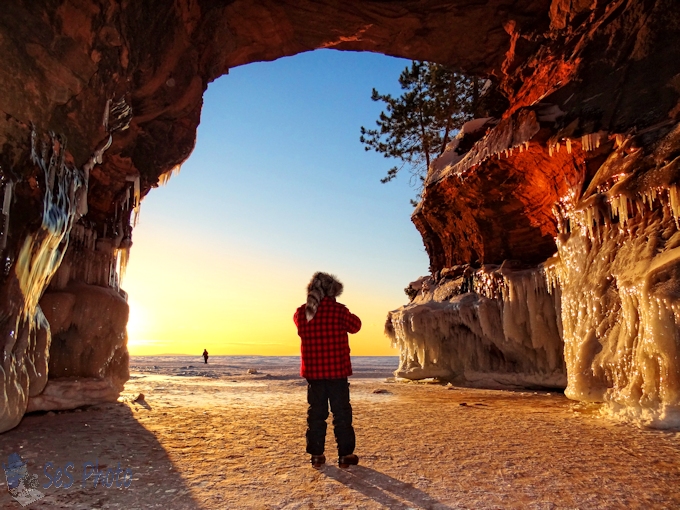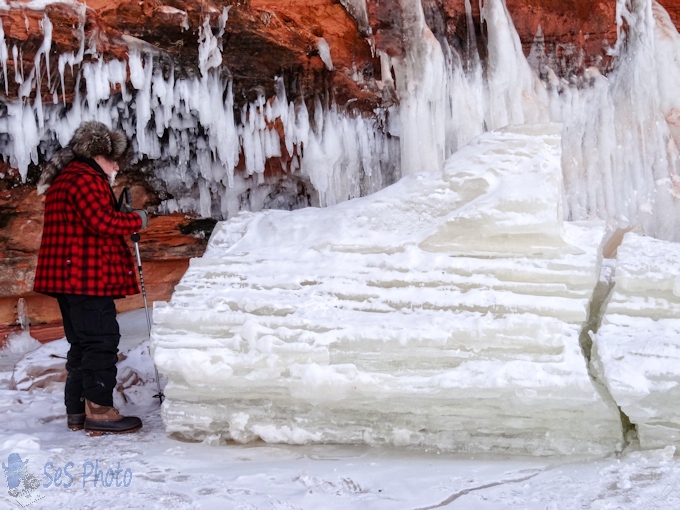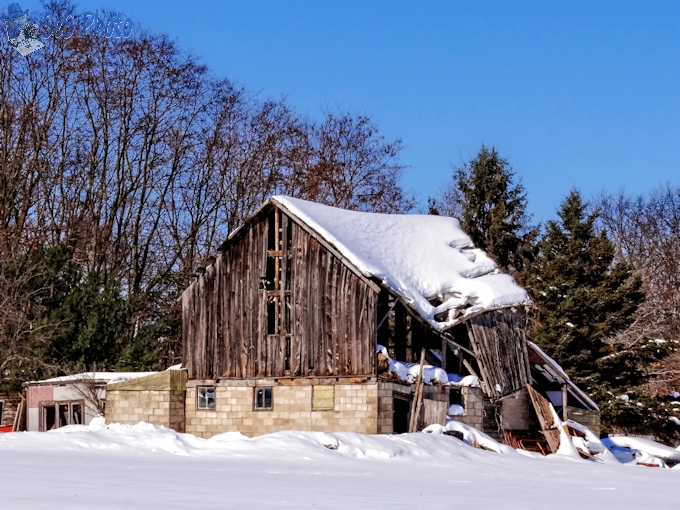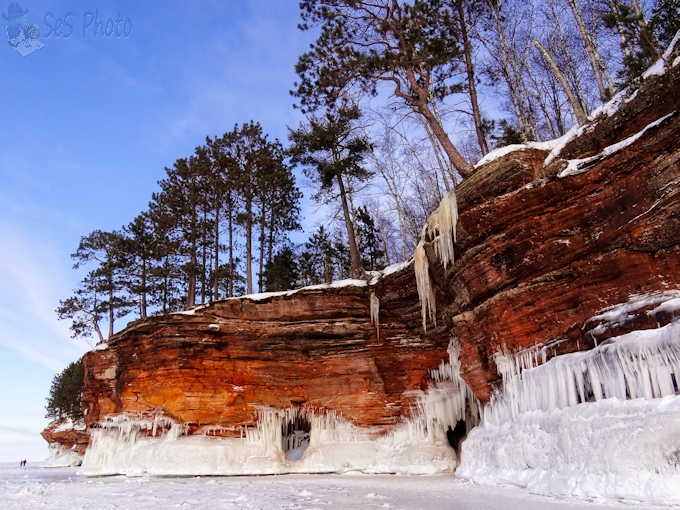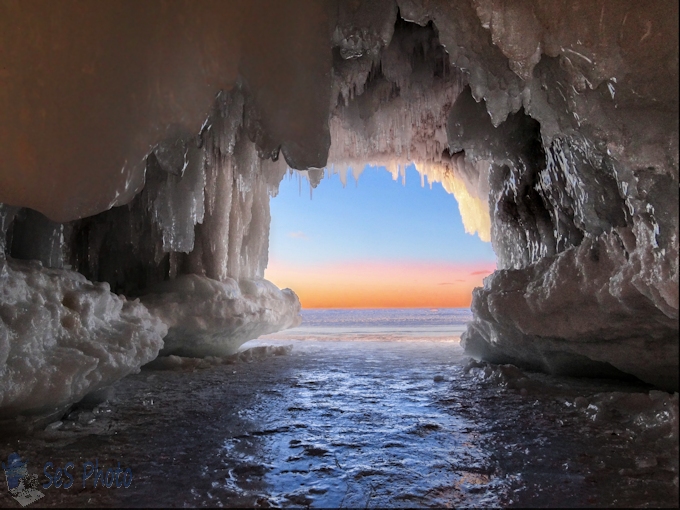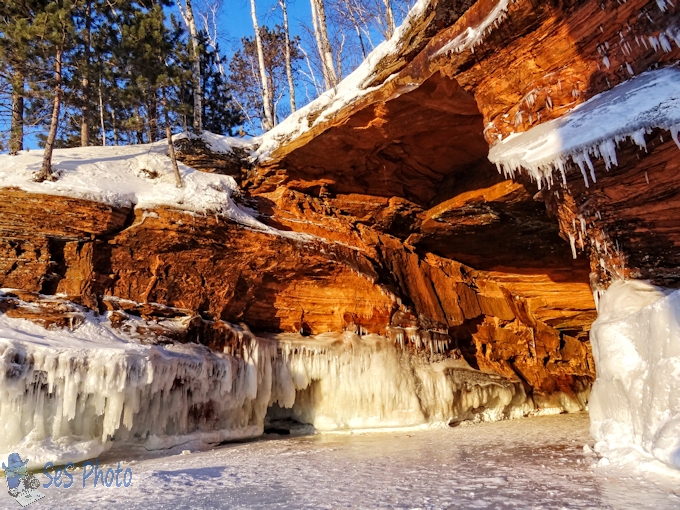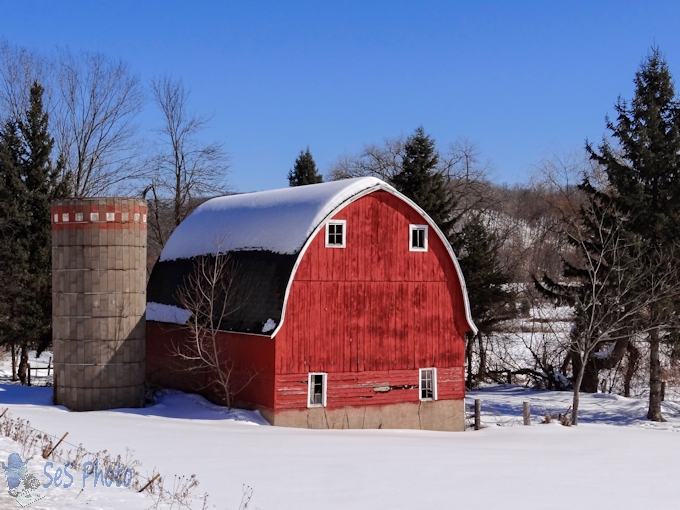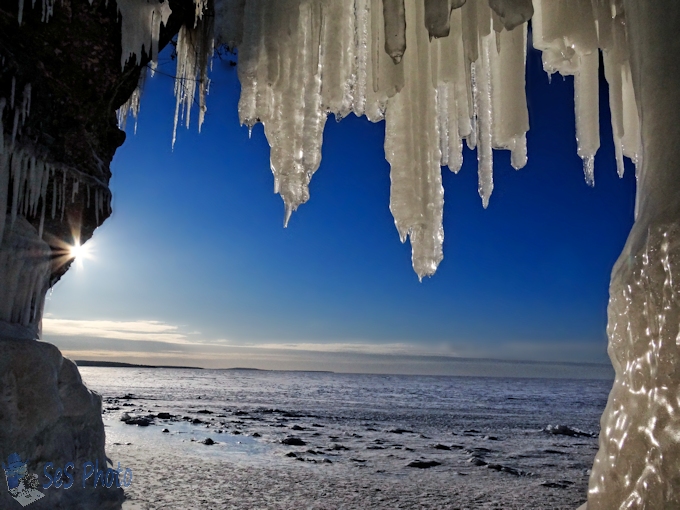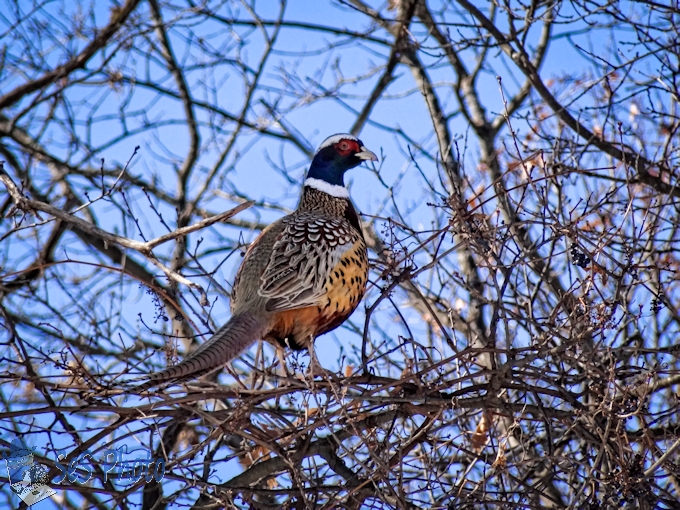In this cave, you don’t have to worry about icicles falling down on your head, but you might want to watch out for falling slabs of rock instead. Plus you have to remember that you are walking on ice which you hear cracking and you wonder if you will drop into Lake Superior. Even though it was a three mile hike and you listened to the creaking and moaning of the ice under your feet, it was a grand area to explore the depths and height of this cave with walls coated with different types of ice including crystal clear and a ceiling of red colored sandstone which took on a golden glow as the sun set.
Red Golden Cave


